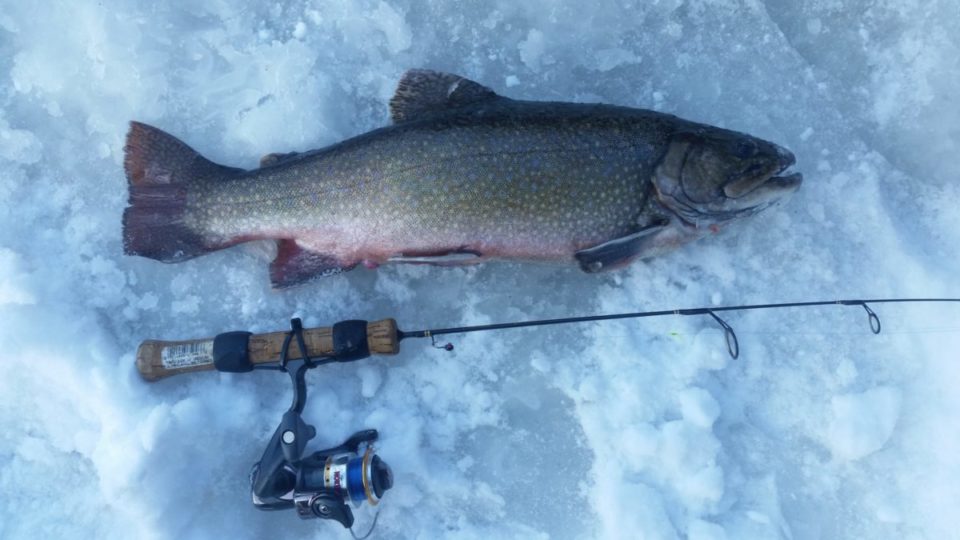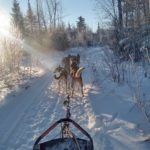If you’re looking for solitude in the Boundary Waters, the opening day of the winter trout season isn’t the best time to find it.
Winter trout season may not draw the same number of anglers as the spring walleye opener, but it definitely has a large fan base.
“There must have been 50 people out there,” said Finland Area Fisheries Supervisor Dean Paron of his trip into the Boundary Waters for last year’s winter trout opener. “I’ve been on the lake where you essentially have the lake to yourself. I was just shocked by the amount of people there last year. The year before it was maybe 10 people.”
It’s even more crowded on more-accessible designated trout lakes outside the Boundary Waters, where it’s not unusual to see dozens of anglers on the ice on opener.
Unlike other fish species, when safe ice determines when they can be pursued, trout seasons have official opening dates in the winter, which may cause some of the hoopla.
“Generally, we see most of our pressure in the first two weeks (of winter trout season),” Paron said. “People do seem to come out and fish pretty hard opening weekend and the following weekend.”
Participation declines after that. Paron noted that winter creel surveys on trout lakes in his area last winter observed an uptick in fishing pressure, but he wonders how much of that could be attributed to the all-around increase in outdoor activity during the Covid-19 pandemic.
Accessibility is one major factor in the amount of fishing pressure a given lake receives each winter. Lakes in the Boundary Waters are generally harder to reach than those outside the B-dub. But even lakes outside the Boundary Waters may require long treks through deep snow on a snowmobile, skis or snowshoes. Add in cold temperatures and strong winds and the number of anglers willing to brave the elements declines.
Paron said his office is trying something new on a few trout lakes in his management area this winter. Normally, “catchable-sized” rainbows weighing about one-third of a pound are stocked in spring, while smaller, “fingerling” splake are stocked in fall. Those spring rainbows have to survive summer angling pressure to be available for ice anglers and splake will need to survive in the lake for more than a year before they’re big enough to interest anglers. This year, however, Paron said his staff stocked rainbows in late October weighing two-thirds of a pound. These fish have never seen angling pressure and should provide good fishing this winter. These fall-stocked rainbows have clipped adipose fins to distinguish them from spring stocks. Echo, Hogback and Divide lakes each received 1,000 of these larger rainbows this fall.
Anglers have good luck fishing trout with small spoons, jigging Rapalas or jigs tipped with waxworms or salted minnows. Start looking for trout in shallow water of about 5 feet and move deeper if you don’t find fish. In winter, shoreline water is plenty cold enough to support trout, and that’s where they find minnows, crayfish, insects and other foods. Although you can use electronics, a lot of anglers enjoy watching fish come in while fishing in clear, shallow water.
“I start shallow and move deeper, especially early in the season,” Paron said. “I focus on shorelines where I see a lot of wood.”
“If I’m targeting rainbows, I give the spot an hour and then I move,” Paron continued. “Splake don’t seem to move as much. It seems like once you find splake, you find more in that area.”
The winter trout season for both lake trout and stream trout (brook trout, brown trout, rainbow trout and splake) runs Jan. 1 to March 31 for lakes entirely within the Boundary Waters and from Jan. 15 to March 31 for lakes outside of or partially outside of the B-dub. Anglers should note a few special regulations for designated trout lakes in Minnesota waters. A trout stamp is required and only one line is allowed. No live minnows may be possessed. However, you can fish with preserved minnows or live baits such as nightcrawlers or waxworms.




